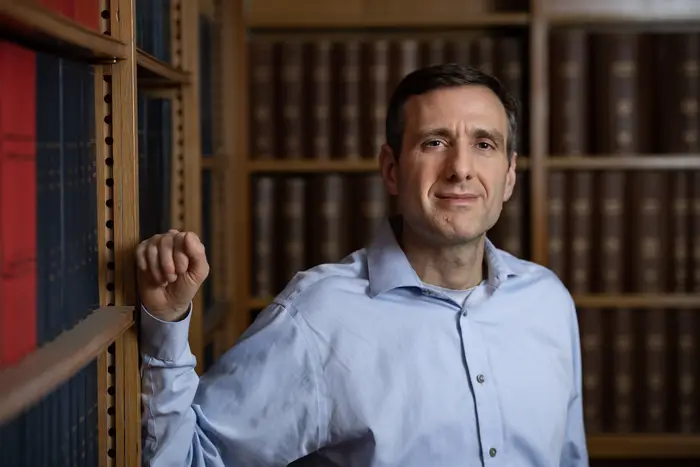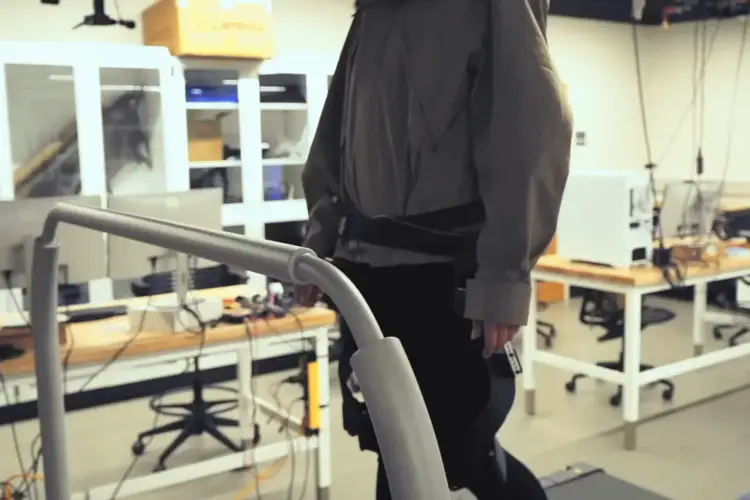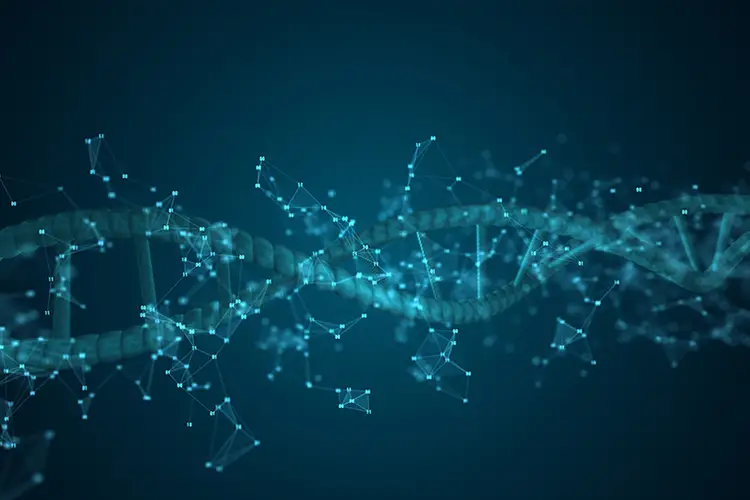CMU Undergraduates Take on Cancer Research
Media Inquiries
Carnegie Mellon University students often pursue their interests and passions through research opportunities while earning a bachelor's degree. Students are encouraged by the Office of Undergraduate Research and Scholar Development(opens in new window) to do so as a way to explore their favorite subjects and set the groundwork for future studies.
This is not to say that their work is not already having an impact on their chosen fields. For instance, among the hundreds of undergraduates(opens in new window) who presented their research at this year's Meeting of the Minds(opens in new window) — CMU’s annual undergraduate research symposium — some focused their efforts on improving cancer treatment.
When Vivek Chelur first came to CMU, he was interested in exploring both biology and computer science. He found the undergraduate program in computational biology (opens in new window)to be a perfect match for his goals. Now, as an undergraduate doing research, he is able to make an impact on his chosen fields while also gaining valuable knowledge in both subjects — specifically, an understanding and treatment of cancer.
Dormant cancer and benign tumors tend to stay in one part of the body. Over five years, the survival rate and the treatment rate for these kinds of diagnoses are almost 100%, explained Chelur, now a sophomore presenting his work in the Gates-Hillman Center.
"But once the cancer starts to metastasize or spread to other parts of the body, the survival rate drops down to less than 30%," he added. "Metastatic cancer is a really big problem and hard to treat, so our goal was to learn from samples: Can we identify the mutations that are causing the cancer to metastasize and spread to other parts of the body? If we can identify those mutations, it's much easier to pinpoint some kind of genetic change or gene that we can target for treatment, in order to prevent the cancer from spreading to other parts of the body."
Chelur’s project centers on analyzing data to predict the behavior of tumors using cancer phylogenies — trees that map the development and mutation of cancer cells over a period of time. The project is one element of a pre-existing collaborative effort between the Ray and Stephanie Lane Computational Biology Department headed by CMU Professor Russell Schwartz(opens in new window), and a team at Allegheny Health Network’s Cancer Institute.
"I've used part of the lab's work, and I've also added on a pipeline which basically takes liquid biopsy data — blood data that has circulating tumor DNA — and does an analysis on it in order to produce clonal frequencies, an evolutionary tree and other data that can help us figure out what mutations are causing metastasis and how the tumor is evolving over time," Chelur said.
This allowed Chelur to gain a direct understanding of the lessons he learned in his day-to-day studies in computational biology, while also innovating practical solutions with direct mentorship from faculty.
"I had not worked with Vivek prior to this research project. He originally reached out to me as a first-year student looking for research opportunities based on his interest in our work in computational cancer biology," said Schwartz, who acted as Chelur's mentor for the project. "Vivek and I worked out between us a specific project of his own that would fall into the area."
Schwartz said that the value of undergraduate research is often an important step for students to build skills and consider what they might want out of a research career. And with so much collaboration happening between schools and colleges — like the computational biology program itself, located in the School of Computer Science(opens in new window) and pulling on expertise from institutions like the Mellon College of Science(opens in new window) — there is no shortage of opportunity to learn while innovating.
"The greatest strength of CMU is the interdisciplinary perspective here and the eagerness to work across disciplinary boundaries," Schwartz said. "I think it is something CMU does particularly well and that lets us create an environment where work like this can succeed."
"In part, that means being able to support research groups like mine that are focused on solving hard computational problems that are motivated by real-world problems, in our case real-world problems in improving cancer treatment. It also means support for the kinds of cross-disciplinary education and training that is needed to attract students like Vivek and give him the opportunities and educational resources needed to build a career in this field."
Innovating into new territory
Jeremy Kovacs is a junior in electrical and computer engineering(opens in new window) in Carnegie Mellon's College of Engineering(opens in new window). Throughout his time at CMU, he has used his pre-existing skills and knowledge gained from computer science courses to expand beyond his major and contribute to cancer research as well, having received funding from OURSD as part of the 2024 Summer Undergraduate Research Fellowship(opens in new window)
In the work Kovacs presented at Meeting of the Minds, he used several programs — Salmon, DESeq2 and TERRACE — to quantify and compare RNA-sequence data from 10 pancreatic cancer patients, nine healthy donors and two plasma extracellular vesicles.
"RNA is like transcribed DNA," Kovacs said. The work built on this simple premise started with a simple question: In the RNA samples, how many counts of each gene are expressed?
This data was quantified for each gene. "From that, we can compare the cancer patients and healthy donors and find the genes that are more expressed in the cancer patients compared to the healthy donors," Kovacs said. "And then we know that those genes are correlated with pancreatic cancer."
This was not the Kovacs' first project related to genetic data analysis. Between his freshman and sophomore years, he conducted analysis on extrachromosomal circular DNA (ecDNA) samples, which are correlated with cancer mutation development.
He said that this year's research was a refreshing challenge. And while the research is still ongoing Kovacs hopes to see this work published in a paper in the future, and to contribute to more advancements in analyzing circular RNA data.
"I didn't know how involved of a process this was. I didn't have much of a biology background. Running all of the programs, getting used to all of the RNA analysis of the different samples, comparing the different reference genomes, and the whole process of aligning it and quantifying the different counts — I've enjoyed figuring out how the whole pipeline works for analyzing the data."
Collaborations help fight cancer
As an undergraduate at CMU, Noémie Gomes-Jourdan was afforded the opportunity to work toward real solutions in an intellectually rich and cooperative environment.
A recent graduate from Carnegie Mellon University's Biological Sciences program in the Mellon College of Science, Gomes-Jourdan’s work — undergraduate research in the lab of the University of Pittsburgh’s Sandra Cascio — has focused on studying the immunosuppressive components of the ovarian tumor microenvironment, with the long-term goal of improving the effectiveness of immune checkpoint inhibitor (ICI) therapy for patients.
"About 21,000 women are diagnosed with ovarian cancer each year in the U.S., and this disease has the highest mortality rate of all female reproductive cancers," Gomes-Jourdan said. "It therefore feels incredibly meaningful to me to be able to contribute to research with the ultimate goal of improving treatment for these patients."
As a Summer Undergraduate Research Fellow, presenter in this year's Meeting of the Minds symposium and new alumna, Gomes-Jourdan was able to reflect on the value of that research to her education.
"From my time in the lab, I’ve learned that it is important to be patient and persevere, as experiments often do not go as expected the first time or the first many times," Gomes-Jourdan said. "I’ve also learned of the incredible value of collaboration in a research lab, each person completing a small part in a larger project."
She advised anyone interested in exploring research interests who may be unsure of where to start to first and foremost contact relevant labs, teams and programs.
"Reach out to as many labs and programs as possible whose work interests you, whether at CMU, elsewhere in Pittsburgh or back in your hometown. Learning new research techniques takes some time, but with the help of a supportive team, you'll be amazed at your growth."






